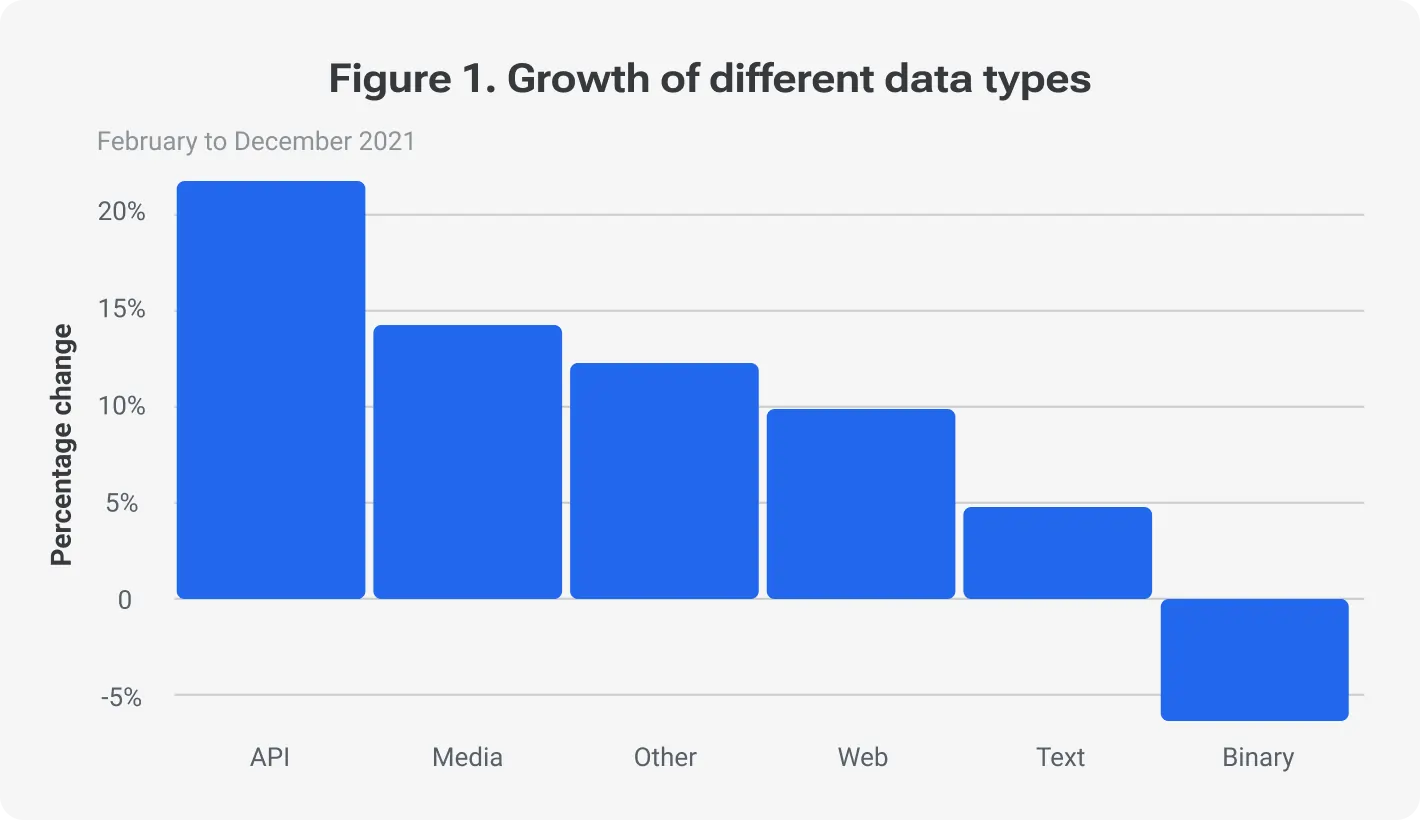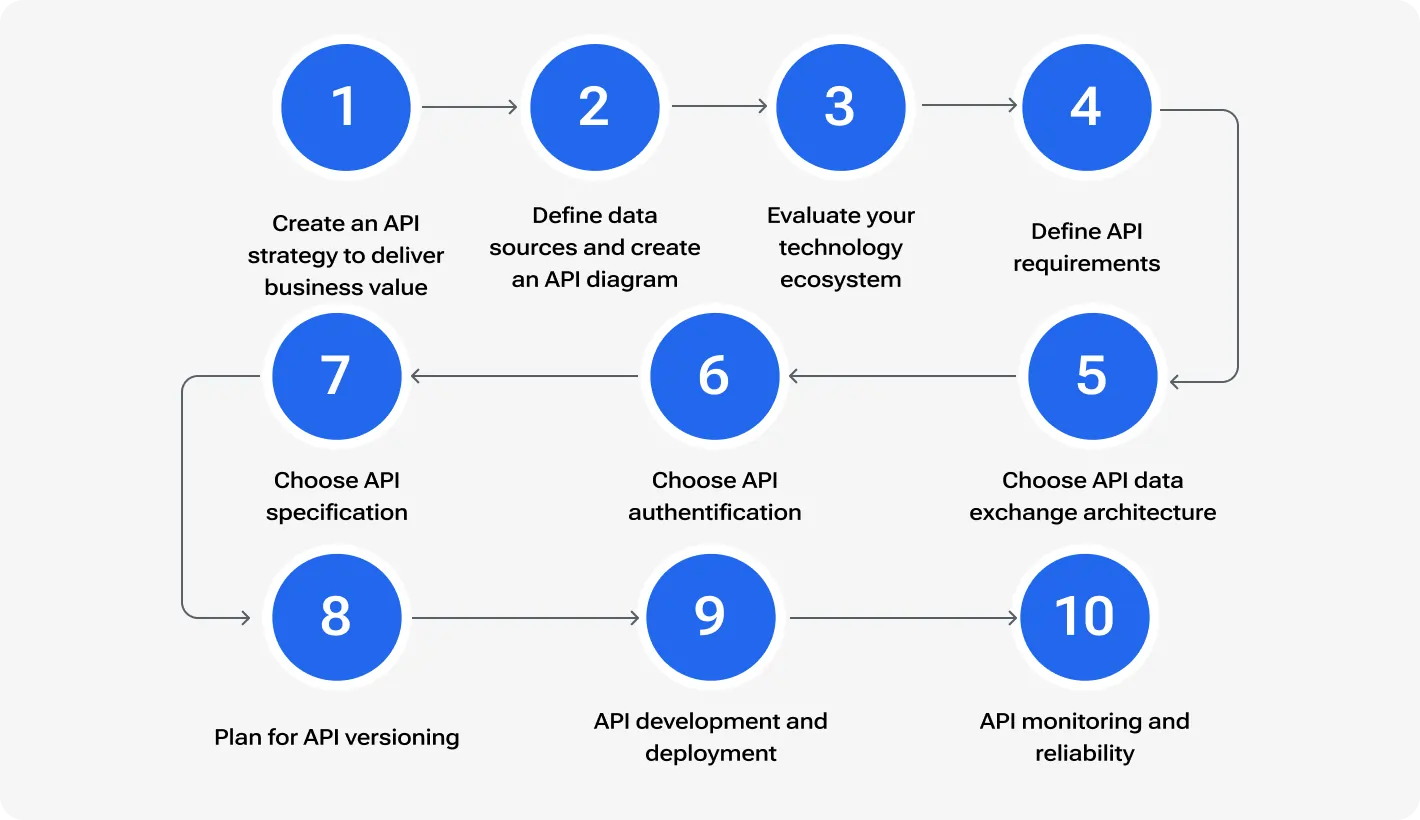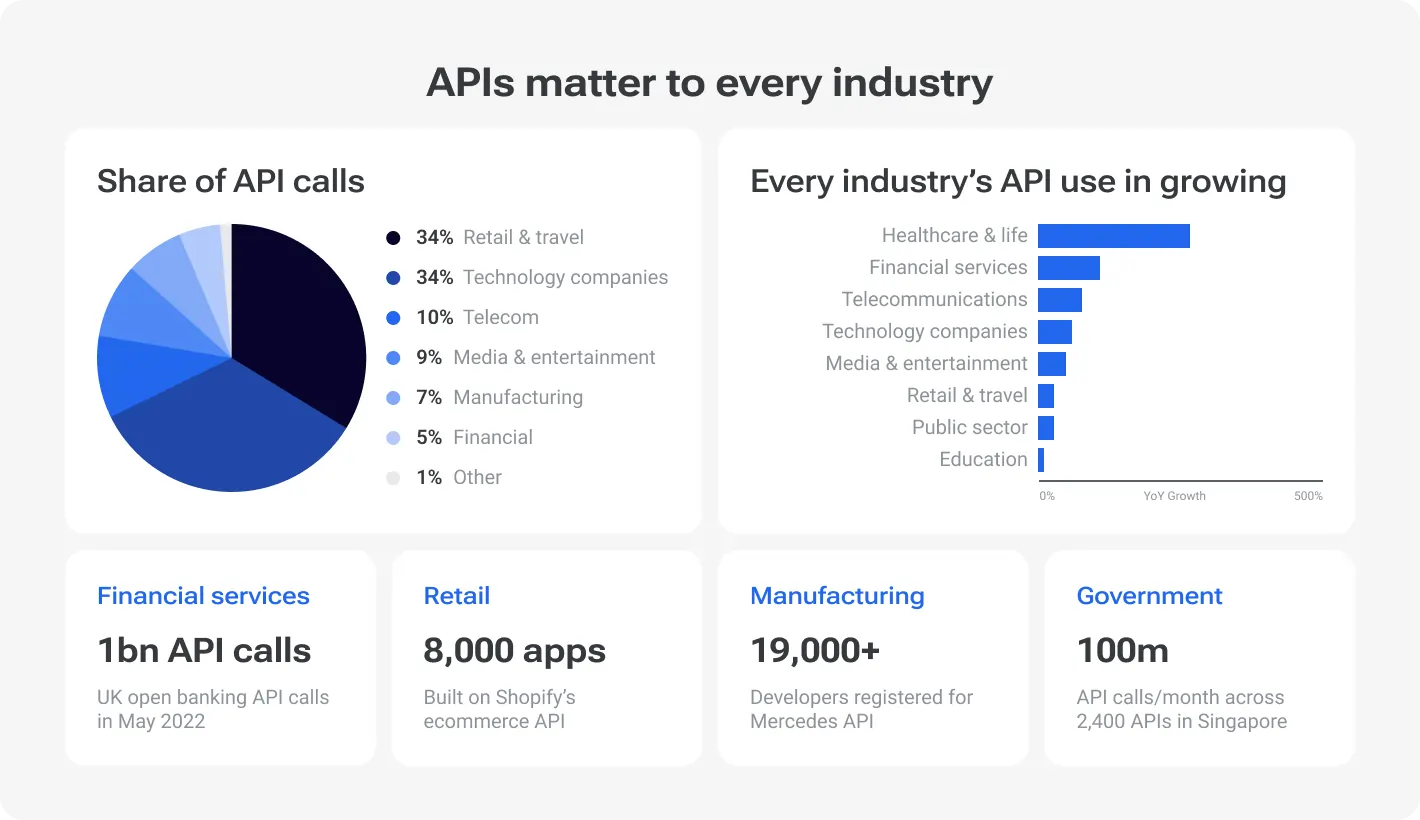Outsourcing to Czechia

How much does it cost to hire developers in Czechia?
Dec 2nd 25 - by Devico Team
Find out how much it costs to hire software developers in Czechia in 2025. Compare hourly rates, roles, and factors that impact pricing.
Hire
Hire by role
Hire Front-end developers
Hire Back-end developers
Hire Full-stack developers
Hire Android developers
Hire iOS developers
Hire Mobile developers
Hire AI engineers
Hire ML engineers
Hire Automation QA engineers
Hire Blockchain developers
Hire Data engineers
Hire Cloud engineers
Hire by skill
Hire JavaScript developers
Hire TypeScript developers
Hire Ruby on Rails developers
Hire React Native developers
Hire Flutter developers
Hire Golang developers
Hire React.js developers
Hire Python developers
Hire PHP developers
Hire .NET developers
Hire Java developers
Hire Laravel developers

API development
December 24, 2024 - by Devico Team
Summarize with:
API is driving innovation forward across business sectors and industries: they improve interoperability of different software systems, enhance the implementation of new ideas, and personalize user experience. 84% of businesses are using APIs in 2024, and if you are still missing out, this article is for you.

We will dig deeper into the basics of API development and integration, the kinds of API and their possibilities for your business, the most popular examples of API usage, and some handy tools stemming from APIs.
Knowing how APIs work and how they can elevate your business is crucial for creating efficient, scalable, and innovative software solutions. If you are ready to enrich your knowledge base when it comes to API, stay on this page.

API is a set of rules and protocols that allow different web platforms and applications to exchange data and services, basically communicating with each other. More than 90% of C-level representatives indicate APIs as mission-critical since it allows for creating strong ties between different types of software, enhancing the interoperability of several platforms at once and thus elevating user experience and streamlining profit generation for businesses. API integration is built block-by-block using different types of protocols.
There exist different paradigms for building, maintaining, and interacting with APIs: REST, SOAP, and GraphQL. Each type of API has a unique set of functions serving different purposes. Here are the most common API examples in more detail:
REST is an architectural style used to design networked applications. It relies on stateless communication and uses standard HTTP methods for it. REST API is famous for its straightforwardness, flexibility, and the ease of usage;
SOAP is a protocol for exchanging structured information in web services. Unlike REST, SOAP typically uses XML as its message format and operates over several application layer protocols, including HTTP, SMTP, and TCP. SOAP API is way more complex and stringent compared to REST but it is also recognized for its robust security;
GraphQL is a query language for APIs, developed by Facebook. Unlike REST and SOAP, which return fixed structures of data, GraphQL allows clients to request exactly the data they need, and nothing more, within one single interaction with an API.
API development and API management are thorough processes that include several stages. The procedure needs to be followed step-by-step in order to prepare and launch a successful API.
At this stage, it is crucial to define the purpose of the future API by gathering information from partners, stakeholders, customers, etc. It is also important to determine which data will be exposed by the API and how users will interact with it. Once all the information is gathered, you must define the type of API depending on its purpose: REST, SOAR, or GraphQL, whichever one serves the aims of the company best.
This step requires defining the structure of your API, including its endpoints, request and response formats (for example, e.g., JSON or XML), HTTP methods, authentication and authorization mechanisms, rate limiting, and error handling. Basically, this is where the structure of your future API slowly comes into life so you have to be meticulous with the design process. By using special tools we will describe in this article, you can facilitate the process and automatize many of its aspects.
Create a mock version of your API to test its request and response system and detect any existing errors at an early stage. Some of the best tools for API prototyping include Postman, Swagger, Mockoon, Insomnia, Beeceptor, API Blueprint, and others.
Then, prepare all the documentation necessary for the API launch, including info on the endpoints and their use, request/response system, and authentication and authorixation processes.
Now comes the most important step of the process, which is API development. It involves implementing the previously determined endpoints, integrating the database and making sure it properly corresponds with possible requests, implementing security measures like SSL/TLS for data encryption, as well as authentication and authorization features, setting up logging for debugging and error monitoring, and conducting constant tests at the development stage.
It is crucial to run functional testing, integration testing, security testing, performance testing, and error handling of a newly created API. These processes help with checking API’s behavior in different conditions, ensuring its seamless integration and data exchange with other platforms and softwares, identifying possible vulnerabilities and blind spots of an API, testing the scalability under high load, and preventing possible bugs and errors in the process of the API use.
Another important step in the process of maintaining an API is keeping proper API documentation. In order to increase API’s performance and, consequently, user engagement, you must draft all the associated documentation in a comprehensive, user-friendly manner. The paperwork includes the explanation to API usage, endpoints, methods, authentication, request/response structures, and examples. Besides, if an API has multiple versions, each version must have its own documentation outlining the changes, improvements, and their specifics.
Once the API is set and functioning, uninterrupted monitoring and regular maintenance are required. The API monitoring tools like Postman, New Relic, Pingdom, Uptrends, Dynatrace, or APImetrics are designed to track the performance of an API from different perspectives, including the point of view of the end-user. With these tools, it is also possible to monitor the availability of an API from different locations, its response time and correctness, as well as detect anomalies and analyze them at the root.
API versioning is the practice of improving an API and changing its features over time while preserving its backward compatibility. In essence, this means that developers can add new features, change the structure of an API or its request-response models, and fix errors by creating new versions of one and the same API. Thanks to backward compatibility, applications and platforms that rely on the older versions of this API will keep functioning normally.
API versioning leaves room for deprecation and sunsetting: older versions of an API can be gradually phased out or deprecated, allowing clients time to migrate to newer versions and test their features.
Make sure to streamline the support channels of your API in order to keep stable communication with users. Feedback is the best way to improve an existing API, especially if you use versioning. Provide adequate customer support for end users, design a chatbot that can answer the most widespread questions about an API and provide instructions to its use. If the API is set to perform complex functions, adequate user support is a must.

API integration is crucial for modern applications because it helps create connections with other applications and services effortlessly. Exactly by interaction with other platforms, applications can increase their user engagement and experience with the platform, and API is the tool that builds bridges between softwares, no matter how different from one another they are. According to MuleSoft, APIs can help businesses improve customer satisfaction by 20%, which, consequently, can lead to an increase in profits. Moreover, the recent report by Forbes stated that companies that have integrated Application Programming Interfaces (APIs) into their operations have seen their market capitalization increase by more than 12% compared to those that have not adopted this technology.
The path to smooth API integration: Expert tips and tricks
As we have already discussed, API integration is a multifaceted process that involves ensuring the usability, responsiveness, and security of an API prior to its launch. If you want to integrate an API into your platform, here are the mandatory steps you will need to take:
Identify requirements: assess the technical and business requirements of your company. Define which purposes the future API will serve and how it will be of use for you and your clients;
Select the right API type: choose the proper protocol for your future API that serves its purpose best;
Authentication and authorisation: implement API security measures like OAuth, API keys, and tokens. Test their proper functioning multiple times and ensure adequate detection and reporting procedures for possible security breaches;
Testing: before the launch, run multiple rigorous tests to make sure that the API functions properly and serves the purpose it was designed for;
Implementation: finally, after conducting all the tests, integrate the API into your website or application, ensuring seamless interaction between the two;
Monitoring and maintenance: after the API is already launched and intact, don’t forget to monitor its usage and functionality, as well as do regular maintenance checks for API security.
The global API economy is expected to reach $267 billion by 2025, which forecasts more and more businesses joining the trend. This is why it is fair to say that API tools are indispensable in many spheres of human knowledge and activity online. Practically any goal posed for a website or application can be achieved through the use of an API if it involves the interaction of multiple sources. Below, you can study and assess the most popular and widespread examples of API usage.
E-commerce integrations: APIs are indispensable for integrating payment gateways into e-commerce websites and applications. Besides, they are used for providing shipping services whenever clients purchase goods on a website or via an application;
Social media APIs: it is feasible and fairly easy to integrate Twitter, Facebook, Instagram, or any other social media into a website or an application. For instance, when you wish to display posts on a particular topic on a dedicated page of your website;
APIs for data services: you can integrate an API of a weather app or a maps app into any platform or application. This integration can be used for multiple purposes: for example, to provide location services or information on the location of a particular place;
IoT integrations: APIs are also widely used for connecting smart devices like sensors, actuators, gadgets, appliances, or machines that are programmed for certain applications and can transmit data between each other via an API.
The development and integration of APIs can be facilitated on each level with the use of specifically designed API tools. These tools automatise many tedious processes associated with API development, allowing businesses to launch their native APIs and conduct their testing and monitoring in a faster and more efficient way. In the table below, you will find the most common examples of API tools used in day-to-day API development.
- Definition of API architecture
- Design of API endpoints
- Development of API documentation
- Definition of API request/response structure
- Design of API authentication mechanisms
- Implementation of API testing and validation
- Development of API monitoring and analytics tools
- Control access to API
- Improvement of API performance
- Guarantee API security
- Correct of PI functionality
- Guarantee of proper performance
- Detection of bugs or errors
- Assurance for no vulnerabilities
- Deliver insights into API usage and behavior
- Tracking API performance
- Usage of patterns
- Refinement of APIs
- Improvement of API performance and functionality
According to the SlashData Developer Economics Survey 19th edition, nearly 90% of developers are using APIs in some capacity. However, how many of these API use cases are actually successful? It is possible to launch a properly functioning API on the first try even without previous experience if you follow the best practices in API development.
These include following the most effective design principles, ensuring and maintaining security, keeping proper API documentation, improving scalability, and engaging with other developers and communities for exchanging insights and providing support.
API is designed to build stable connections between platforms and applications, facilitating their interaction, but the process of API development and integration can be daunting, especially for beginners. By following the best practices for API creation, you can not only develop your own API from scratch but also optimize it and enhance its features for even better user engagement and effectiveness.
A surefire way to make any API usable is by following the RESTful principles that make any API predictable in use, thus helping with detecting and preventing errors. RESTful APIs adhere to six core constraints:
Statelessness
Client-server architecture
Cacheability
Uniform interface
Layered system
Optional code on demand
Versioning is another important principle, which includes keeping the older versions of an existing API in place in case the updates can cause errors for older users. It is also important to constantly handle errors, returning clear error codes and providing adequate information for troubleshooting.
Implementing robust security measures is crucial for successful API functioning. Use tools such as encryption and rate limiting in order to protect user data and the information provided by an API, detect suspicious activity and prevent attacks at early stages.
The next step is providing clear and comprehensive API documentation, such as API reference documentation, detailed descriptions of endpoints, examples of requests and responses, authentication and authorization details, error codes and handling, and changelog documentation.
Scalability is one of the most important characteristics of any API, henceforth it is important to design APIs to handle scale and load efficiently. For this, developers can and should use caching, load balancing, database optimization, and asynchronous processing.
To maintain proper functioning of an API and complement it with new features, it is important to engage with developer communities via specifically designated platforms. By participating in forums and discussion portals and providing support to other API developers in the form of ticketing systems and dedicated support channels, you can enrich the global API knowledge base and learn priceless tactics for your own API development and implementation.
Top API development trends you can’t afford to ignore
API development is a complex process that, nevertheless, pays off to the fullest when you commit to it. But API is more than just a trend, it is a universal tool for bridging gaps between applications and services, boosting cooperation and taking client engagement to a whole new level.
By sticking to the best practices in API development and integration, even a beginner developer can build an efficient and user-friendly API. And if you are feeling stuck, Devico opens its doors: become partners with our company to receive expert guidance on API development at each stage of the process. Together, we can explore and implement API solutions of the future.
Outsourcing to Czechia

Dec 2nd 25 - by Devico Team
Find out how much it costs to hire software developers in Czechia in 2025. Compare hourly rates, roles, and factors that impact pricing.
Outsourcing to Czechia

Nov 25th 25 - by Devico Team
Compare Czechia and Poland for software outsourcing in 2025. Discover costs, talent, infrastructure, and which country fits your project best.
Outsourcing to Czechia

Nov 18th 25 - by Devico Team
A complete guide to outsourcing software projects to Czechia, learn about costs, talent, benefits, and how to build successful partnerships in 2025.